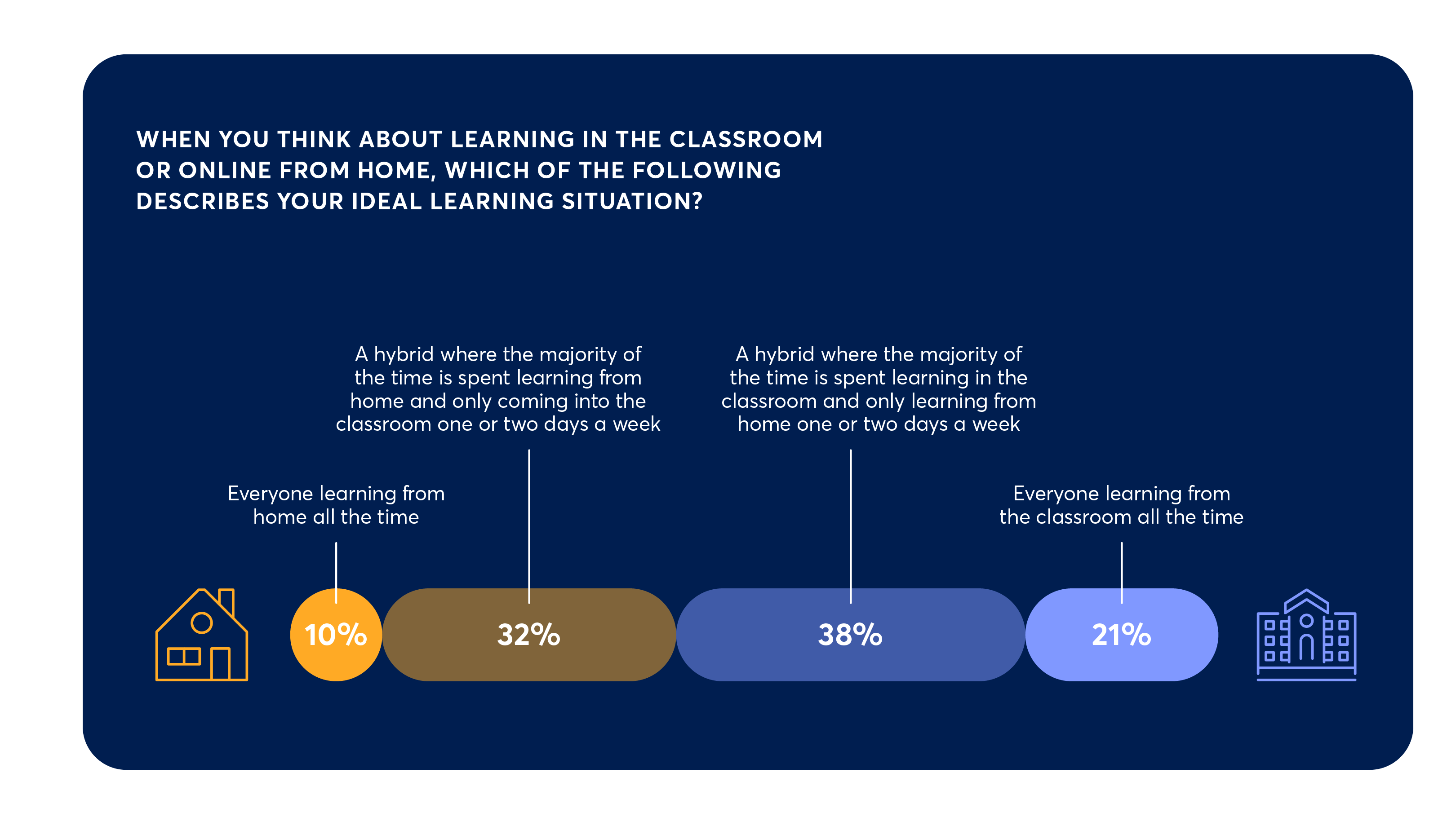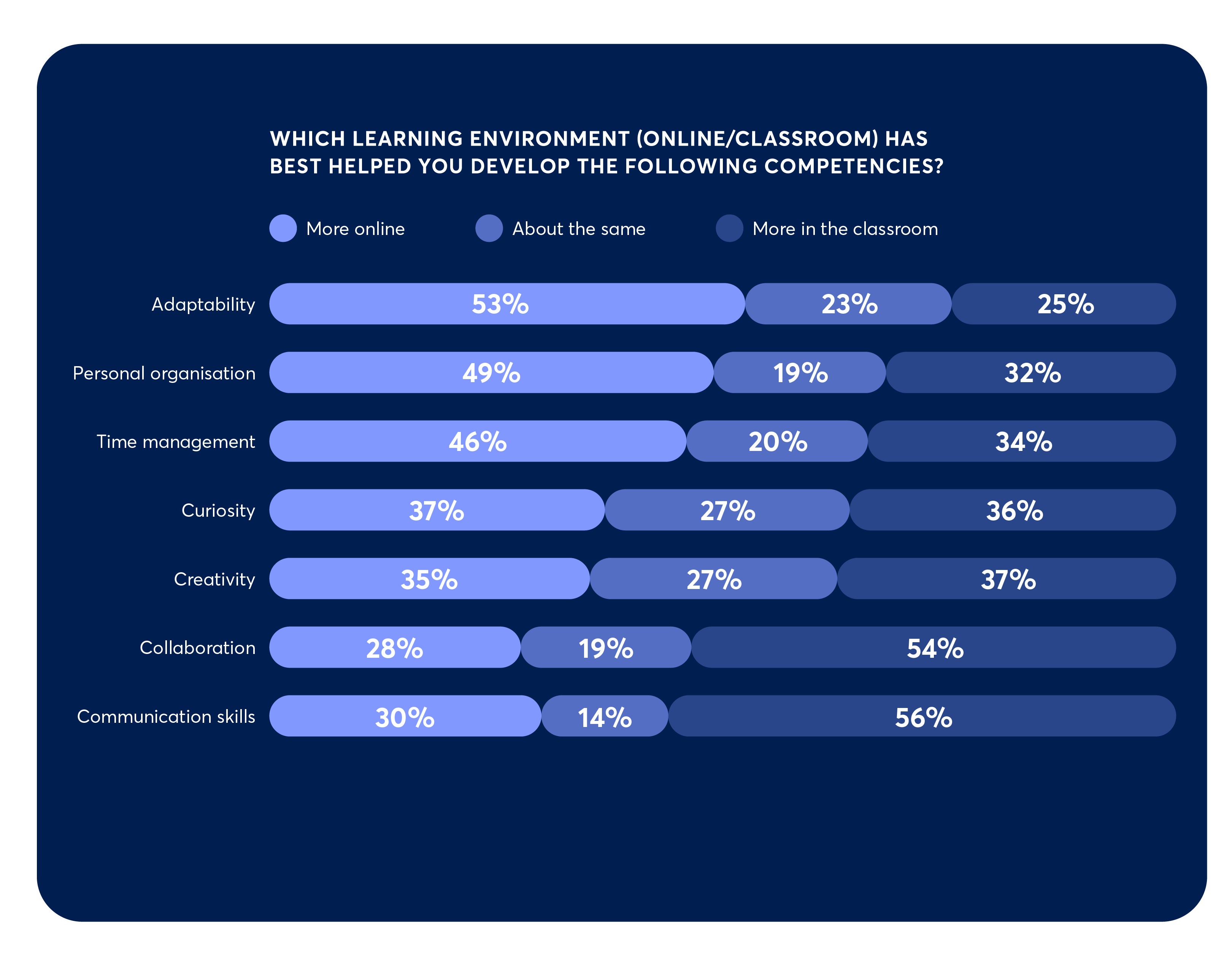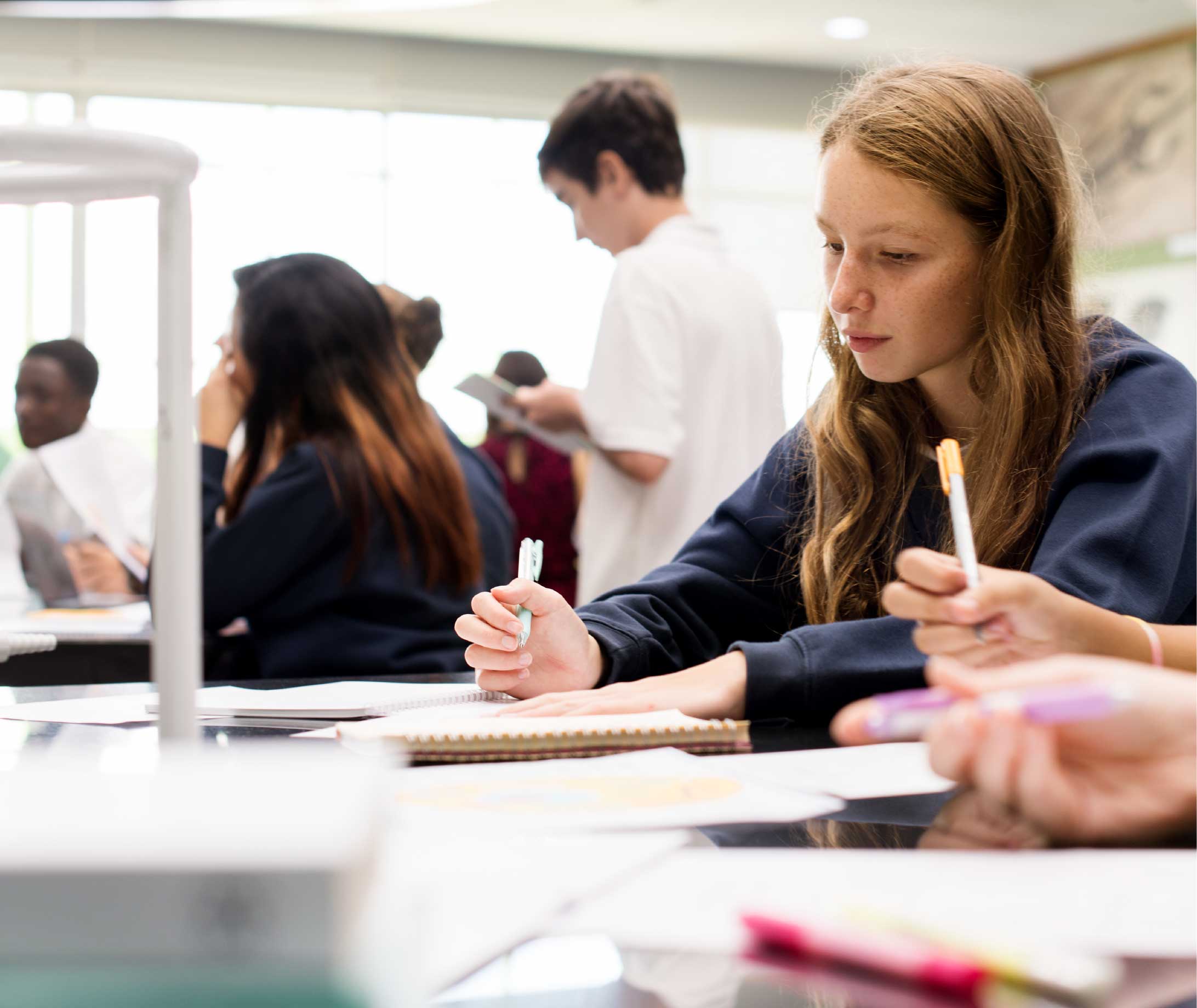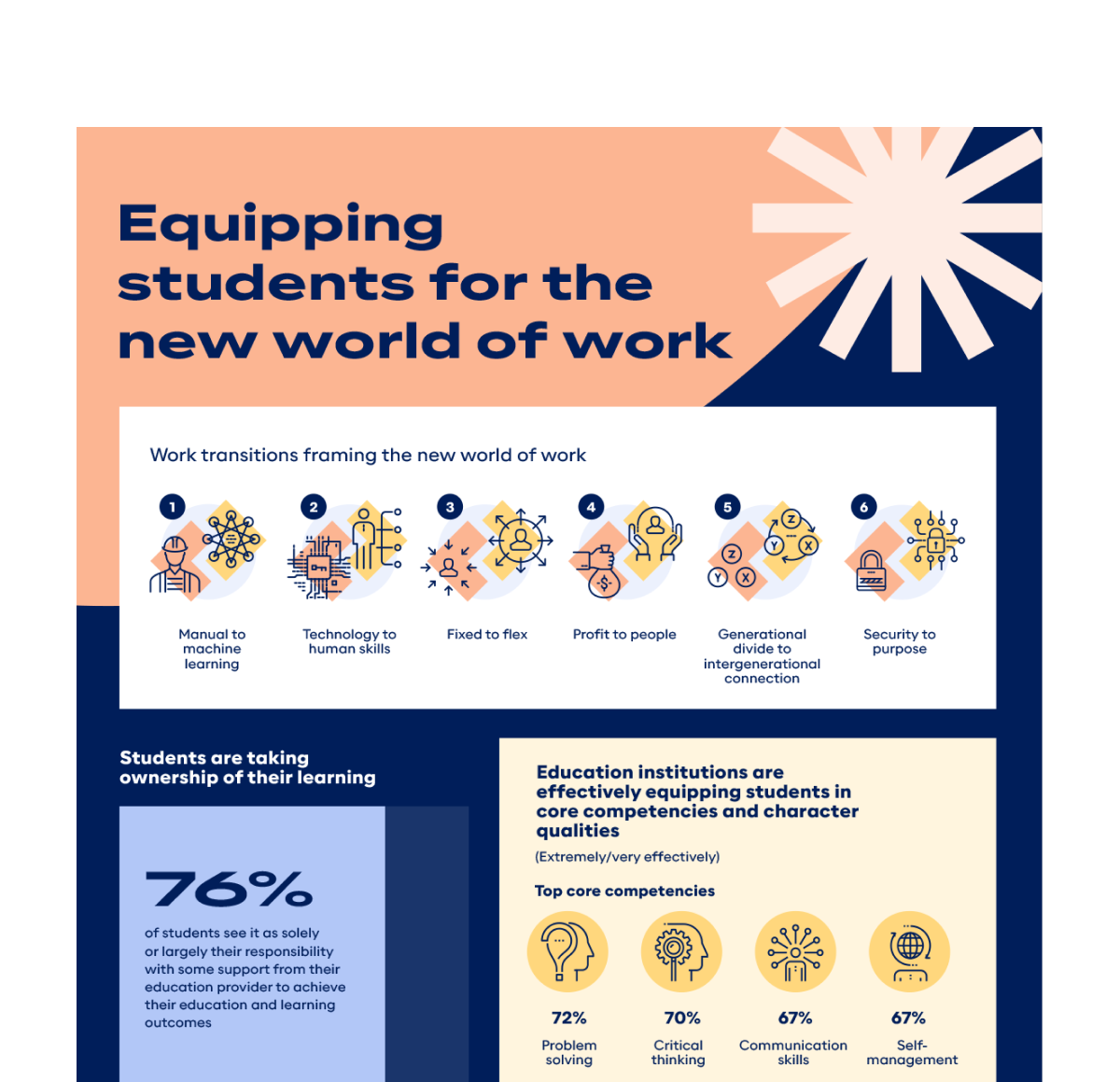Is hybrid learning the way of the future?

COVID-19 has revolutionised the world of work with the widespread adoption of remote working. Many employers are looking to maintain the flexibility that working from home allows, with 61% of Australians looking for a degree of flexibility in their working arrangements.
Learning environments experienced a similar upheaval with transitioning to online learning. It therefore poses the question, is the future of learning environments likely to follow the workplace with a desire for flexibility?
Students prefer a hybrid learning model
In our recent study of 1,201 Gen Z students, we explored this topic and found that seven in ten students (70%) describe their ideal learning situation as a hybrid one. Almost two in five (38%) would prefer the majority of time learning in the classroom and only learning from home a couple of days a week, while 32% would prefer the majority of time spent learning from home and only coming into the classroom a couple of days a week.

Unsurprisingly, school students (29%) are more likely than tertiary students (12%) to see their ideal learning situation as one where everyone is learning from the classroom all the time. The majority, however, of both school (63%) and tertiary students (77%) see their ideal learning situation as hybrid.
Physical and digital learning environments develop different skills
With the digital is increasingly replacing the physical, it is important to explore how this impacts student learning and experience. When asked which learning format – online or in the classroom, has best helped develop a number of different competencies, the environment differs based on the competency.
For competencies such as adaptability (53%), personal organisation (49%) and time management (46%) students are more likely to say that the online learning environment has best helped them develop these competencies.
Competencies such as communication skills (56%) and collaboration (54%), however, are more likely to be best developed in the classroom. Students are likely to strongly hold this perspective with one in four (25%) agreeing collaboration is developed much more in the classroom and almost three in ten (28%) agreeing communication skills are developed much more in the classroom.

Utilise the environment to develop different competencies within students.
With the learning environment impacting the development of certain skills among students, it is important that a hybrid learning environment is considered in the future of education. Employing this approach allows education facilities to intentionally use the learning environment to focus on developing different competencies within students.
It is unlikely that we will defer back to the traditional learning environment, as on a global scale the paradigm of learning has shifted. We are not moving to the next but the new, it is not a continuation of how things were, but the start of a whole new reality for the future of learning. As we begin to step into this, however, it is not a discarding of the old but an adaption of and innovation towards selecting the most effective methods of both, to create an engaging and empowering learning environment of the future.





